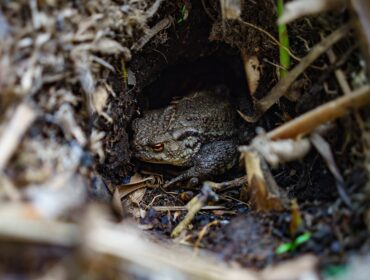Bugs are a part of nature, and as such, they play important roles in the ecosystems they inhabit. However, some of these bugs, including insects and arachnids, can pose risks to human health ranging from mild irritation to severe illness, so you’d do well to make yourself aware of what these bugs look like and what precautions you can take before you head into the wild outdoors. Here are just a few of the major bugs to beware of on your next outdoor adventure.
Mosquito

Perhaps the most ubiquitous pest to campers and hikers, the mosquito diverges into a wide array of species, most of which are not as dangerous as they are irritating. However, because mosquitoes feed on the blood of living animals, they have the potential to spread disease. Your best defense against mosquito bites is a thorough coating of repellent spray on your entire body, and to wear clothing that will protect as much exposed skin as possible, like pants and long sleeves. Be sure to spray your clothing with insect repellent as well.
Tick

The tick is another nasty little bloodsucker that hails from the class of arachnids. These tiny mite-like bugs are indiscriminate parasites that feed on the blood of virtually any living creature they can burrow their jaws into. They are widely distributed in nearly all parts of the world, but most favor a warm, moist climate as it aids in metamorphosis. Ticks have the capability to harbor a variety of pathogens at once, making them a very risky bug to come into contact with. Your best defense against ticks is to use a repellent that contains 20 percent or more DEET on your entire body, and to wear clothing that covers the skin. After a day in the outdoors, be sure to check all areas of your body for ticks, including your clothing, and shower as soon as possible. Throwing your clothes in the dryer on high heat for an hour will kill any ticks that may be lurking in crevices and folds.
Wasp

Wasps are not known carriers of disease, but its sting is one you’ll not likely soon forget. Many people have allergies to the stings of wasps, so even a single sting can be gravely dangerous. Wasps are typically attracted to sweet smells, so be sure to cover any food you may have out in the open. Swatting, running, or generally acting hysterical at a wasp will only make the wasp more aggressive, so if one lands on you, do your best to remain calm and let it fly away on its own, or move to shade, as these creatures are attracted to light. You can make or buy a wasp trap for your campsite if you’re really concerned about their presence.
Fire Ant

We all know that ants play a very important role in all ecosystems on Earth, and most can be considered little more than an annoyance on outdoor excursions. But one that will cause some serious damage while merely defending its territory is the fire ant. This little insect injects a venom that is composed of alkaloids, which can produce severe to fatal allergic reactions in some people. Most people will experience pain, swelling, itching, and irritation from the bite of a fire ant, which can be unbearable if the unfortunate victim happens to cross a swarm. The best way to avoid these creatures is to survey your camp or picnic site for their nests before you decide to set up, because one thing is sure — the fire ant is not going to run from you before you run from it!
The outdoors is a dangerous place and while there are plenty of bugs to beware of, you should also keep your distance from these poisonous plants.
Featured Image from Syed Ali/Unsplash




